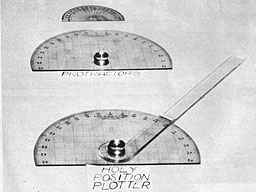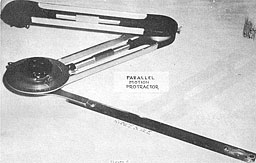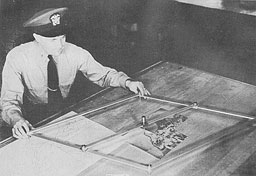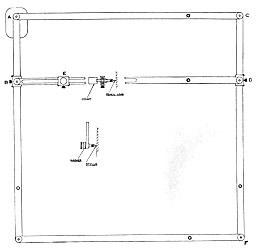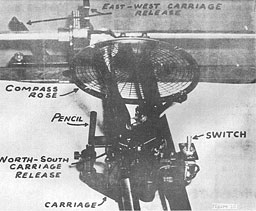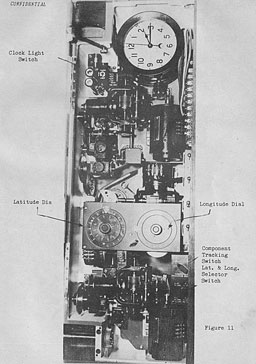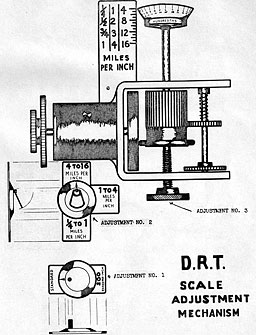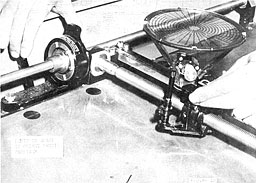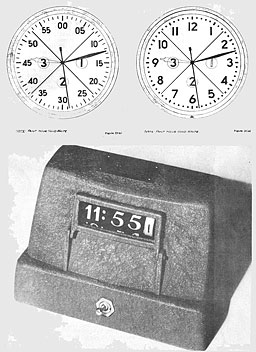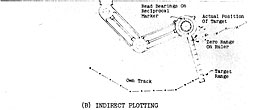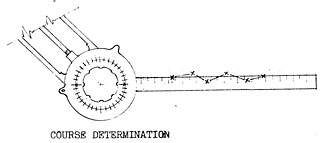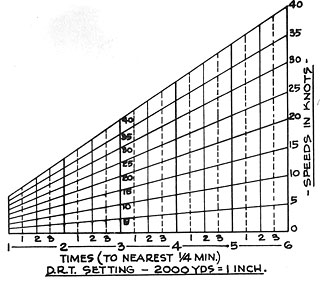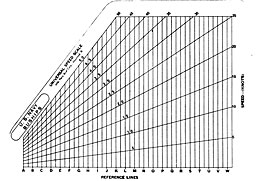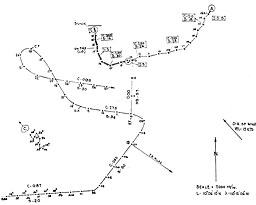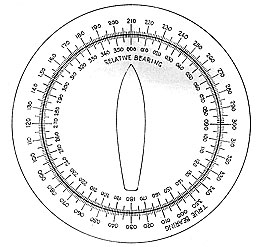
2000. THE NAVIGATIONAL PLOT.
BASIC CONSIDERATIONS.
Definitions.
The navigational plot shows by means of lines drawn on a plotting surface the successive positions of a ship's travel. Lines connecting these positions indicate direction and distance traveled with respect to the earth. This plot will, therefore, show the movement as would be observed from an airplane. (See Figure 1). This method of plotting is extremely valuable in the Combat Information Center in that it shows what is taking place with respect to the earth as well as with respect to ships in the area. It show? (as accurately as the data producing it will allow) what has already taken place and indicates trends upon which to plan future action.
Direction of travel is referred to as "course" and is expressed in degrees or by points of the compass. The navy always uses the former and expresses the courses by three digit numerals, i.e., 000°, 002°, 270°, etc.
Rate of travel is referred to as "speed" and is always expressed in knots. (1 knot = 1 nautical mile per hour).
Distance is expressed in nautical miles. (1 nautical mile = 2000 yards). In arithmetic we have learned that rate times time equals distance. So if we travel at a rate of 15 knots for one hour we will have gone 15 nautical miles.
Range is the distance between two objects, usually from the ship to an object, and is expressed in yards or miles.
Bearing is the direction of one point or object with respect to another or to the points of the compass.
True bearing is the direction of a point or object with respect to the direction of true North. It is measured 360° clockwise from 000° (North).
Relative Bearing is the direction of one point or object with respect to the ship's bow. It is measured in degrees (or points) clockwise through 360°, 000° being the bow of the ship. (Note Figure 2)
True bearings are used to facilitate the positioning of an object or ship with respect to the earth (or ship if its heading is known.) These bearings are readily plotted knowing only one position at which the bearings are taken.
Relative bearings are used to locate objects with respect to the bow of a ship. To plot relative bearings it is necessary to know in addition to the point at which the bearing is taken, the heading of the ship at the time (unless automatically indicated).
Thus, it is seen that true bearings are more useful to plotters than are relative bearings. On the other hand, relative bearings are more useful to lookouts and gunners who do not have access to a gyro repeater to determine the ship's heading.
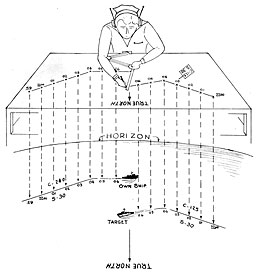

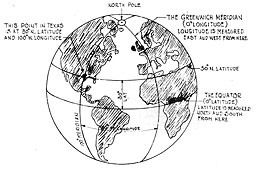
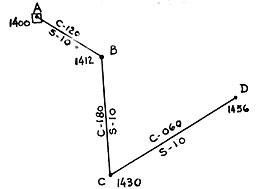 Dist A-B = 2 mi. = dist. traveled in 12 min. at 10 knots.
Dist A-B = 2 mi. = dist. traveled in 12 min. at 10 knots.
